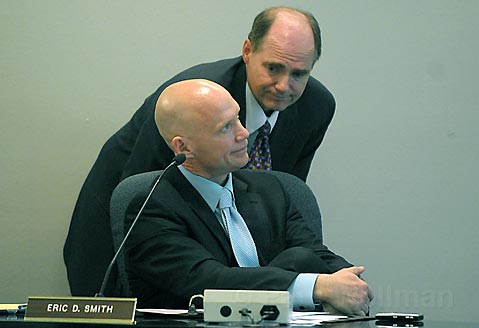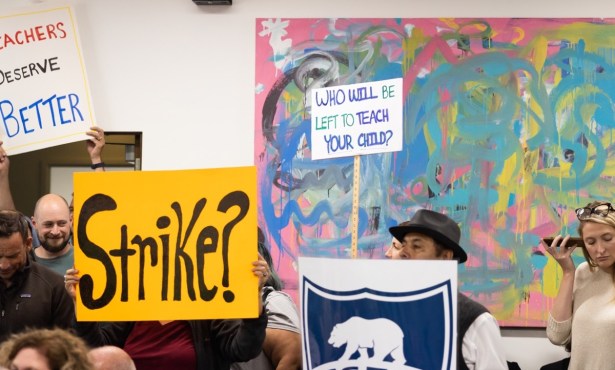School Board Cuts Budget – Again
Sarvis: 'We Haven't Hit Bottom Yet'

School may be out for the summer in the Santa Barbara School Districts, but that sure didn’t make things any easier for the Board of Education this week. In a local version of a storyline currently playing itself out in public school districts throughout the state, the board was forced once again to wield its budget-cutting blade this year, thanks to the sick mess that is the California state budget. Less than two months after delivering a $3.1-million hatchet job on their $119-million annual general fund, the five-member board spent nearly four hours on the evening of Tuesday, June 17, reluctantly grappling with ways to cut just under $1.5 million more from a budget that has endured nearly $10 million in cuts since 2007. “Nobody wants to cut teachers, programs, principals, or assistant principals,” explained a visibly distraught Superintendent Brian Sarvis at the start of the meeting, “but cut we must.”
Specifically, heeding the advice of district Deputy Superintendent and chief bean-counter Erik Smith, the board, in the name of fiscal prudence, needed to come up with $1 million worth of cuts in the secondary district and $500,000 in the elementary district during Tuesday’s special hearing. With relative ease, unanimously passing simple budget craftsmanship tweaks like suspending contributions to deferred maintenance funds, capping the amount they spend annually on outside tech support, and hoping that the planned overhaul of the district’s embattled Special Education department will reduce litigation fees, the board was able to get about halfway to their goal before being forced to tackle what Board President Kate Parker called the “harder stuff.” After all, as Smith put it during the meeting, “When you take away more than $8.5 million in two years, pretty soon you run out of places you can cut.”
The gut wrench began in earnest as the board whittled away toward the final numbers in the elementary and secondary districts. Teaching positions, administrator jobs, and class-size reductions ended up on the cutting-room floor, while things like salary reductions, work furloughs, and making elementary district parents pay $250 a year for their children to be bused to school were adopted. Acknowledging that details would need to be worked out with the Santa Barbara Teachers Association-a process scheduled to begin on June 22-the board tentatively approved doing away with a staff development day, something that equals an approximate half-percent pay cut for all district teachers but has the potential to save eight or nine full-time teaching positions. They also approved a two-day work furlough for all district administrators-roughly a one-percent pay reduction across the board-and accepted an offer from Sarvis to give up $10,000 of his salary. In a move that will equal the loss of an as-yet unknown amount of teacher jobs, the board also approved a class-size increase for kindergarten through third grade from a current 21.45-students-to-one-teacher ratio to 24-to-one. Furthermore, should the Santa Barbara Teachers Association not adopt the development day cut, the board fleshed out a “Plan B” that includes increasing the class sizes in kindergarten through third grade even further, all the way up to 25-to-one, as well as reducing assistant principal positions at both La Cumbre and Santa Barbara Junior High schools.
As bad as it was Tuesday night, it could have been much worse. Thanks to several million dollars in federal stimulus package funding, a healthy strategic reserve fund, and the controversial decision earlier this year to do away with out-of-district transfer students in the elementary schools-a move that should see the elementary portion of the district achieve Basic Aid funding status sometime next year-the sum of the cuts levied this week was actually markedly smaller than it otherwise would have been. That being said, with the current state budget woes still very much up in the air and all signs pointing to continued cash flow problems next year, the financial future of the district is anything but certain. Acknowledging the aforementioned situation, Sarvis opined, “I think we are definitely looking at further reductions next year : We haven’t hit the bottom yet.”



